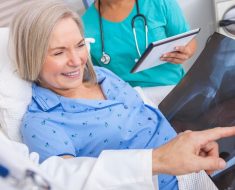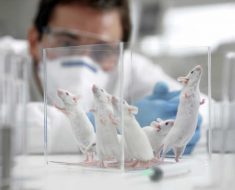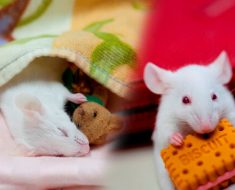Jonathan Ross Show: Danny DeVito's phone GOES OFF
We use your sign-up to provide content in ways you’ve consented to and to improve our understanding of you. This may include adverts from us and 3rd parties based on our understanding. You can unsubscribe at any time. More info
The Golden Globe winning actor has enjoyed a successful career on both stage and screen. As well as acting in front of the camera, DeVito has also become an acclaimed producer, director and screenwriter for projects such as Erin Brockovich. Having not held him back professionally, DeVito was born with a condition known as Fairbank’s disease, or multiple epiphyseal dysplasia (MED) – a genetic bone growth disorder.
As a child the star admitted that his height made him an easy target for bullies, confessing that he “took a lot of lumps,” in an interview with the Emmys.
The youngest of five children, DeVito admitted that his physicality sometimes acted as a “plague” when trying to swoon the ladies.
He added: “I was plagued; I couldn’t slow-dance with the girls I wanted to, but because my face would be in a spot where I might be thought of as moving too fast.”
Despite being seen as somewhat of a hindrance when he was younger, the star’s height has also had an effect on his career and the roles he is offered.

According to Celebheights, the star reportedly said: “On a really good day, I’m five feet short. It’s pretty difficult for me to play anything but the little guy.
“I don’t play a good victim so I’m always the nasty little guy.”
This was seen to run true in the 1988 film Twins, where DeVito played one half of unlikely fraternal twin brothers, the other played by Arnold Schwarzenegger.
DeVito’s character Vincent was a down on his luck guy who ends up in jail for unpaid parking tickets and petty crime, a stark contrast to Schwarzenegger’s character Julius.
The Genetic and Rare Diseases Information Centre explained that MED is a group of disorders affecting cartilage and bone development.
Primarily affecting the ends of the long bones in the arms and legs, the condition is distinguished by their patterns of inheritance.
The most common types of the condition, known as autosomal dominant MED and autosomal recessive MED, are both caused by slightly different genes, however the symptoms individuals experience are similar for both.
Possible symptoms include:
- Hip and knee pain
- Early onset arthritis
- A waddling walk
- Short stature
- Malformations of the hands, feet and knees
- Scoliosis
- Valgus (ankles that roll inward)
- Avascular necrosis (disruption of blood flow to the joints).
https://www.youtube.com/embed/uN28hjq9YfM
It is important to note that not all individuals with MED will experience the same symptoms. However, for those with MED, average height is 57 to 67 inches tall.
Typically the condition is diagnosed later in life, after individuals go through physical examinations and X-rays of the pelvis, lower extremities and shoulders.
John Hopkins Medicine explains that treatment for MED varies, depending on the associated orthopaedic conditions that present in the patient.
Possible treatments to help correct deformities include realignment surgery of the hips, guided growth and total joint replacements of the hips, knees and shoulders if the individual is in pain.

As previously mentioned, individuals with MED are likely to develop arthritis prematurely, perhaps in their 20s and 30s.
The NHS explains that although the condition is common, affecting more than 10 million people in the UK, arthritis can cause severely debilitating symptoms.
The most common types are osteoarthritis and rheumatoid arthritis, which both commonly affect joints such as the hands, spine, knees and hips.
There are lots of different types of arthritis, and symptoms may vary depending on the type individuals have. However, if you experience any of the following, you should seek medical advice from your GP, who will be able to recommend certain lifestyle changes or medicines to help ease pain:
- Joint pain, tenderness and stiffness
- Inflammation in and around the joints
- Restricted movement of the joints
- Warm red skin over the affected joint
- Weakness and muscle wasting.
Source: Read Full Article





